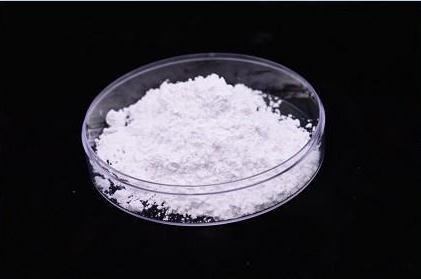Formula Ga2O3 Melting point 1,900 °C Appearance white crystalline powder | Molar mass 187.444 g/mol Density 6.44 g/cm³ | |
 | ||
Gallium(III) oxide is an inorganic compound used in vacuum deposition with the formula Ga2O3. It exists as several polymorphs, all of which are white, water-insoluble solids. These materials are used in some semiconductor devices and porous solids.
Contents
Preparation
Gallium oxide is precipitated in hydrated form upon neutralization of acidic or basic solution of gallium salt. Also, it is formed on heating gallium in air or by thermally decomposing gallium nitrate at 200–250˚C. It can occur in five different modifications, α, β, γ, δ, and ε. Of these modifications β-Ga2O3 is the most stable form.
Reactions
Gallium(III) oxide is amphoteric. It reacts with alkali metal oxides at high temperature to form e.g. NaGaO2, and with Mg, Zn, Co, Ni, Cu oxides to form spinels, e.g. MgGa2O4. It dissolves in strong alkali to form a solution of the gallate ion, Ga(OH)−
4.
With HCl, it forms gallium trichloride GaCl3.
Ga2O3 + 6 HCl → 2 GaCl3 + 3 H2OIt can be reduced to gallium suboxide (gallium(I) oxide) Ga2O by H2. or by reaction with gallium metal
Ga2O3 + 2 H2 → Ga2O + 2 H2OGa2O3 + 4 Ga → 3 Ga2OStructure
β-Ga2O3, with a melting point of 1900˚C, is the most stable crystalline modification. The oxide ions are in a distorted cubic closest packing arrangement, and the gallium (III) ions occupy distorted tetrahedral and octahedral sites, with Ga-O bond distances of 1.83 and 2.00 Å respectively.
α-Ga2O3 has the same structure (corundum) as α-Al2O3, wherein Ga ions are 6-coordinate. γ-Ga2O3 has a defect spinel structure similar to that of γ-Al2O3.
Potential applications
Gallium(III) oxide has been studied in the use of lasers, phosphors, and luminescent materials. It has also been used as an insulating barrier in tight junctions. Monoclinic β-Ga2O3 is used in gas sensors and luminescent phosphors and can be applied to dielectric coatings for solar cells. This stable oxide has also shown potential for deep-ultraviolet transparent conductive oxides, and transistor applications.
Thin Ga2O3 films are of commercial interest as gas sensitive materials and Ga2O3.. Ellipsometry is a procedure that can be used to determine optical functions of the β-Ga2O3.
β-Gallium(III) oxide used in the production of Ga2O3-Al2O3 catalyst.
